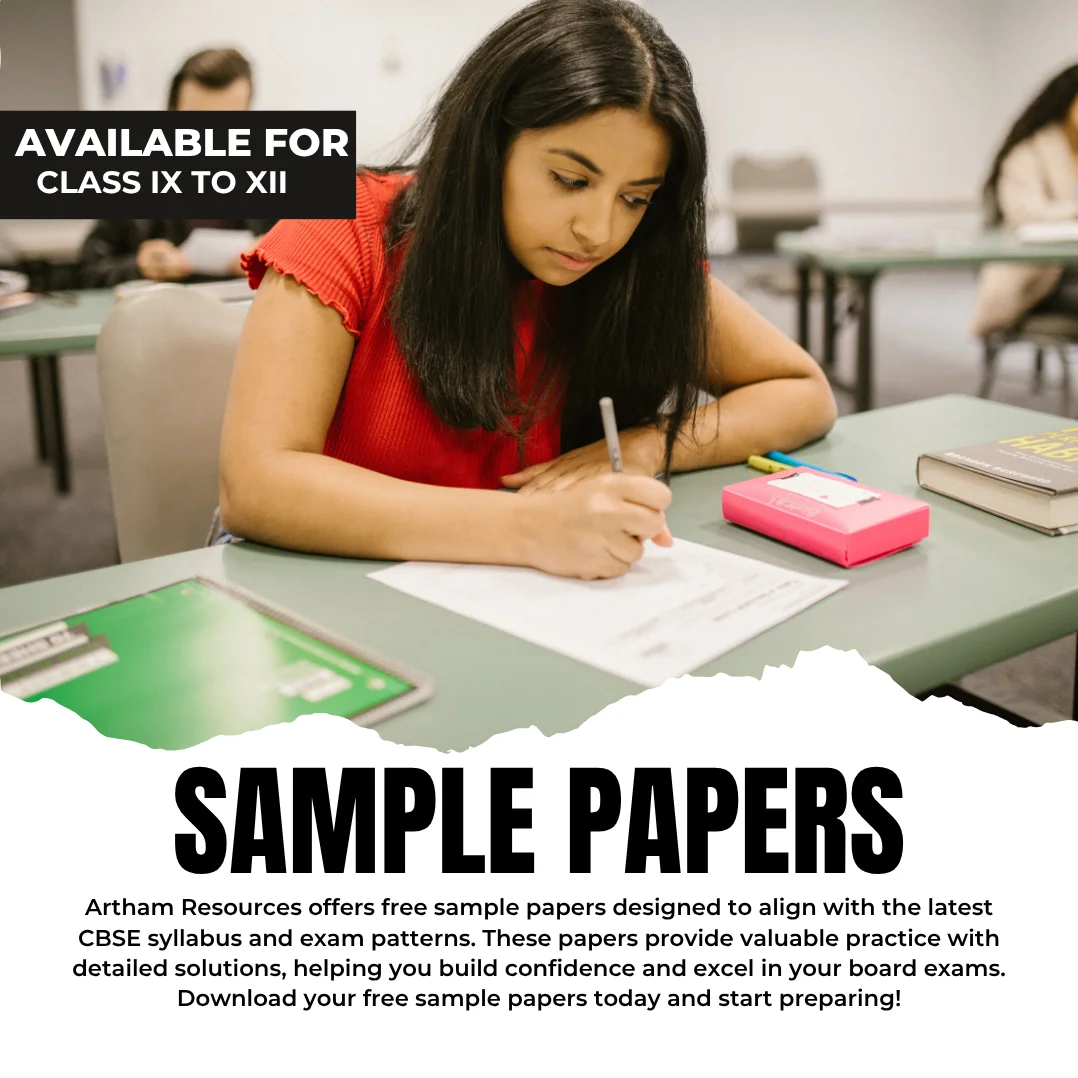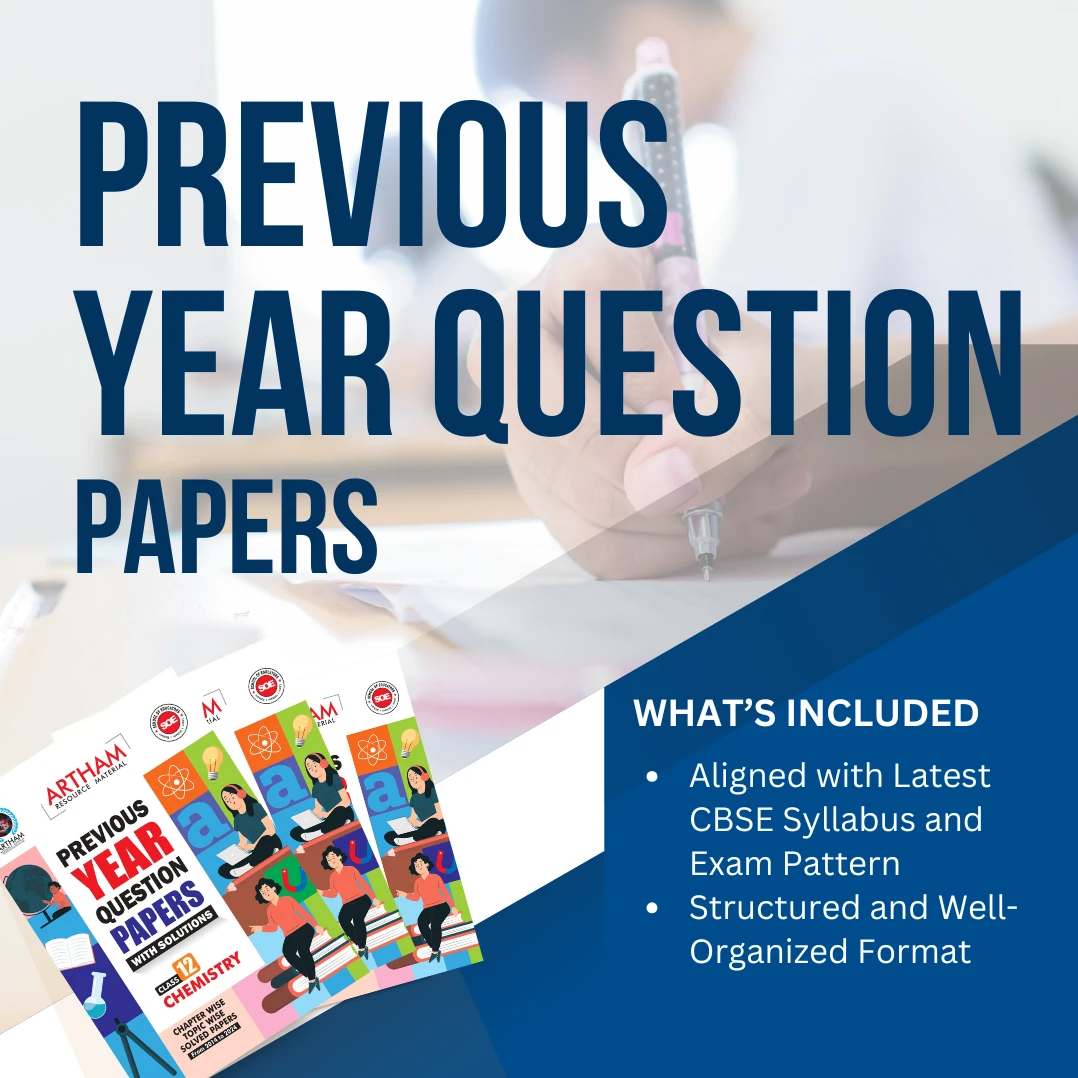Shop Left Sidebar
- CBSE
- Chapter Wise Topic Wise Notes
- Class 10
- Class 9
- Competency-Based Question Bank
- Competitive Exams & Aptitude Tests
- Comprehensive Viva Voice
- Courses
- CUET
- Daily Practice Paper (DPP)
- Diagnostic Assessment
- eBooks
- For New School
- Foundation and Olympiad Study Material
- Gift for Students
- Gift for Teachers
- Half Yearly Sample Question Paper with Solution
- Holiday Homework
- Illustrative Charts
- Journal
- Kindergarten
- Lesson Plan
- Life Skills
- Line by Line Questions
- Mind Maps
- Must Buy
- NCERT Exemplar Solutions
- NCERT Solutions
- Notes
- POWERPOINT PRESENTATIONS
- Pre Launch Stage
- Premium WhatsApp Group
- Previous Year Question Papers
- Previous Year Question Papers with Solutions
- Print version of SOP
- Sample Paper
- Sample Paper with Solutions
- Self Development
- Split -up Syllabus
- Sports and Physical Education
- Standard Operating Manuals
- Study Materials for Students
- Teachers Manual with Lesson Plans
Best seller
-
-100%
₹ 50.00Original price was: ₹ 50.00.₹ 0.00Current price is: ₹ 0.00. -
-100%
₹ 50.00Original price was: ₹ 50.00.₹ 0.00Current price is: ₹ 0.00. -
-100%
₹ 50.00Original price was: ₹ 50.00.₹ 0.00Current price is: ₹ 0.00. -
-100%
₹ 299.00Original price was: ₹ 299.00.₹ 0.00Current price is: ₹ 0.00.
- CBSE
- Chapter Wise Topic Wise Notes
- Class 10
- Class 9
- Competency-Based Question Bank
- Competitive Exams & Aptitude Tests
- Comprehensive Viva Voice
- Courses
- CUET
- Daily Practice Paper (DPP)
- Diagnostic Assessment
- eBooks
- For New School
- Foundation and Olympiad Study Material
- Gift for Students
- Gift for Teachers
- Half Yearly Sample Question Paper with Solution
- Holiday Homework
- Illustrative Charts
- Journal
- Kindergarten
- Lesson Plan
- Life Skills
- Line by Line Questions
- Mind Maps
- Must Buy
- NCERT Exemplar Solutions
- NCERT Solutions
- Notes
- POWERPOINT PRESENTATIONS
- Pre Launch Stage
- Premium WhatsApp Group
- Previous Year Question Papers
- Previous Year Question Papers with Solutions
- Print version of SOP
- Sample Paper
- Sample Paper with Solutions
- Self Development
- Split -up Syllabus
- Sports and Physical Education
- Standard Operating Manuals
- Study Materials for Students
- Teachers Manual with Lesson Plans
Showing 17–32 of 75 results
-
-70%
Chapter Wise Topic Wise Lesson Plan Class 10 English Chapter 8 Fog
₹ 50.00Original price was: ₹ 50.00.₹ 15.00Current price is: ₹ 15.00.The lesson plan for Class 10 English, Chapter 8 “Fog” is designed to engage students in understanding the essence of Robert Frost’s poem through in-depth analysis and creative activities. The plan explores the themes, literary devices, and the symbolic meaning of fog, which represents ambiguity, uncertainty, and the fleeting nature of life.
-
-70%
Chapter Wise Topic Wise Lesson Plan Class 10 English Chapter 9 The Tale of Custard the Dragon
₹ 50.00Original price was: ₹ 50.00.₹ 15.00Current price is: ₹ 15.00.The lesson plan for Class 10 English, Chapter 9, “The Tale of Custard the Dragon,” offers an engaging and structured approach to teaching this humorous and adventurous poem by Ogden Nash. This plan breaks down the chapter into key segments, ensuring a comprehensive understanding of the poem’s themes, character traits, poetic devices, and the lesson it imparts.
-
-70%
Chapter Wise Topic Wise Lesson Plan Class 10 English Chapter 10 For Anne Gregory
₹ 50.00Original price was: ₹ 50.00.₹ 15.00Current price is: ₹ 15.00.This chapter-wise, topic-wise lesson plan for Class 10 English focuses on Chapter 10, For Anne Gregory, a poem by William Butler Yeats. The lesson plan is designed to help students explore the central themes of beauty, superficiality, and self-worth. It examines how the poem reflects on the nature of love and human relationships, emphasizing the idea that love should transcend physical appearances.
-
-70%
Chapter Wise Topic Wise Lesson Plan Class 10 English Chapter 1 A Triumph of Surgery
₹ 50.00Original price was: ₹ 50.00.₹ 15.00Current price is: ₹ 15.00.This lesson plan for “A Triumph of Surgery” focuses on fostering a deep understanding of the chapter’s themes, characters, and narrative structure. The plan is divided into manageable segments, guiding students through key aspects such as the protagonist, Tricki, the setting, and the critical role of surgery in the story.
-
-70%
Chapter Wise Topic Wise Lesson Plan Class 10 English Chapter 2 The Thief’s Story
₹ 50.00Original price was: ₹ 50.00.₹ 15.00Current price is: ₹ 15.00.This lesson plan for Class 10 English focuses on Chapter 2, “The Thief’s Story,” a captivating tale of a young thief’s encounter with an older man who teaches him valuable life lessons. The chapter revolves around themes of crime, self-realization, and transformation.
-
-70%
Chapter Wise Topic Wise Lesson Plan Class 10 English Chapter 3 The Midnight Visitor
₹ 50.00Original price was: ₹ 50.00.₹ 15.00Current price is: ₹ 15.00.The chapter-wise, topic-wise lesson plan for Class 10 English Chapter 3, “The Midnight Visitor,” provides a structured approach to understanding the story. This lesson plan breaks down key elements, including plot summary, character analysis, themes, and literary devices.
-
-70%
Chapter Wise Topic Wise Lesson Plan Class 10 English Chapter 4 A Question of Trust
₹ 50.00Original price was: ₹ 50.00.₹ 15.00Current price is: ₹ 15.00.This lesson plan for Class 10 English Chapter 4, A Question of Trust, focuses on building comprehension, critical thinking, and discussion skills. The chapter revolves around themes of honesty, trust, and integrity. It presents the story of a young boy who learns valuable lessons about trust from his experiences with a thief.
-
-70%
Chapter Wise Topic Wise Lesson Plan Class 10 English Chapter 5 Footprints without Feet
₹ 50.00Original price was: ₹ 50.00.₹ 15.00Current price is: ₹ 15.00.This lesson plan for Chapter 5, “Footprints without Feet,” is designed to help students explore the theme of invisibility and the consequences of scientific discoveries gone wrong. The story follows the intriguing journey of Griffin, a scientist who becomes invisible, leading to a series of misadventures.
-
-70%
Chapter Wise Topic Wise Lesson Plan Class 10 English Chapter 6 The Making of a Scientist
₹ 50.00Original price was: ₹ 50.00.₹ 15.00Current price is: ₹ 15.00.The lesson plan for Class 10 English Chapter 6, The Making of a Scientist, focuses on developing an understanding of the journey of a young boy, Richard Ebright, and his transformation into a renowned scientist. The chapter highlights his curiosity, determination, and the significant role of his mother in encouraging his scientific pursuits.
-
-70%
Chapter Wise Topic Wise Lesson Plan Class 10 English Chapter 7 The Necklace
₹ 50.00Original price was: ₹ 50.00.₹ 15.00Current price is: ₹ 15.00.The lesson plan for Class 10 English, Chapter 7: The Necklace focuses on providing students with a comprehensive understanding of the short story by Guy de Maupassant. The chapter delves into themes like materialism, pride, and the consequences of one’s actions.
-
-70%
Chapter Wise Topic Wise Lesson Plan Class 10 English Chapter 8 Bholi
₹ 50.00Original price was: ₹ 50.00.₹ 15.00Current price is: ₹ 15.00.The lesson plan for Class 10 English, Chapter 8: Bholi focuses on developing an understanding of the story of Bholi, a girl who overcomes societal stereotypes and self-doubt. The plan aims to engage students in the moral lessons embedded in the narrative, exploring themes of self-worth, empowerment, and the importance of education.
-
-70%
Chapter Wise Topic Wise Lesson Plan Class 10 English Chapter 9 The Book That Saved the Earth
₹ 50.00Original price was: ₹ 50.00.₹ 15.00Current price is: ₹ 15.00.The lesson plan for Class 10 English, Chapter 9, “The Book That Saved the Earth” is designed to help students understand the importance of literature and its potential impact on society. This humorous story, written by Claire Boiko, explores a future scenario where books are considered dangerous and the struggle to save literature from being destroyed.
-
-50%
Chapter Wise Topic Wise Lesson Plan Class 10 Mathematics Chapter 1 Real Numbers
₹ 50.00Original price was: ₹ 50.00.₹ 25.00Current price is: ₹ 25.00.The “Chapter Wise Topic Wise Lesson Plan for Class 10 Mathematics – Chapter 1: Real Numbers” is meticulously designed to provide a comprehensive understanding of real numbers and their properties. This lesson plan covers key topics including Euclid’s Division Lemma, the Fundamental Theorem of Arithmetic, and the concept of rational and irrational numbers. It offers a structured approach to teaching, with detailed explanations, illustrative examples, and practice exercises. Each lesson is crafted to enhance students’ problem-solving skills and conceptual clarity.
-
-50%
Chapter Wise Topic Wise Lesson Plan Class 10 Mathematics Chapter 2 Polynomials
₹ 50.00Original price was: ₹ 50.00.₹ 25.00Current price is: ₹ 25.00.The “Chapter Wise Topic Wise Lesson Plan for Class 10 Mathematics Chapter 2: Polynomials” is a comprehensive guide designed to facilitate effective teaching and learning of polynomials. This lesson plan covers essential topics such as the definition and types of polynomials, degrees of polynomials, zeroes of polynomials, and the relationship between coefficients and roots. Each section is meticulously structured to provide clear explanations, examples, and practice problems.
-
-50%
Chapter Wise Topic Wise Lesson Plan Class 10 Mathematics Chapter 3 Pair of Linear Equations in Two Variables
₹ 50.00Original price was: ₹ 50.00.₹ 25.00Current price is: ₹ 25.00.The “Chapter Wise Topic Wise Lesson Plan for Class 10 Mathematics Chapter 3: Pair of Linear Equations in Two Variables” provides a comprehensive guide to teaching this essential chapter. It breaks down the chapter into manageable topics, including the graphical method, substitution method, elimination method, and cross-multiplication method. The lesson plan aims to equip students with the skills to solve pairs of linear equations, understand the consistency of systems of equations, and apply these concepts to real-life problems.
-
-50%
Chapter Wise Topic Wise Lesson Plan Class 10 Mathematics Chapter 4 Quadratic Equations
₹ 50.00Original price was: ₹ 50.00.₹ 25.00Current price is: ₹ 25.00.The “Chapter Wise Topic Wise Lesson Plan Class 10 Mathematics Chapter 4: Quadratic Equations” is meticulously designed to provide an in-depth understanding of quadratic equations, a fundamental concept in mathematics. This lesson plan encompasses a comprehensive approach, beginning with the introduction to quadratic equations, their standard form, and the methods to solve them, including factorization, completing the square, and the quadratic formula. It also covers the discriminant and its role in determining the nature of roots.
Teaching is one of the hardest and most important jobs in the world. We provide the support that teachers need to transform their subjects into terms that their students will understand.
- Nageen International
- B-162, 4th Floor, DDA Shed, Okhla Industrial Area Phase 1 New Delhi-110020 (India)
- WhatsApp us at +91-95208-11111
- Email: info@educatorsresource.in
- (Monday to Saturday) WhatsApp 24*7
2025 Educator Resources. All Rights Reserved.




